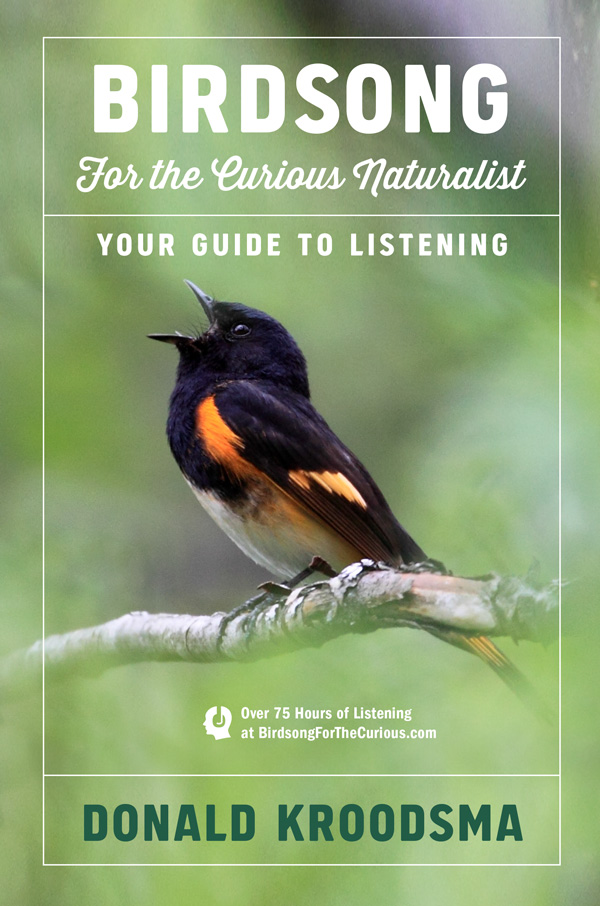Bobolink
Chapter 5: More about Song Learning
Subchapter: Song (and call) dialects
From page 68 in the book.

Photo by Marie Read
Dialect 1. Bullitt Reservation, South Ashfield, Massachusetts (42° 30.052'N, 72° 45.337'W).
♫308. Male 1. Listen first to these two songs from male 1, paying special attention to the unique notes that introduce the first song (0:03 to 0:04). Then, if you wish, try the longer sequence from him, in ♫309; hear how those unique introductory notes occur until 1:30, when the male introduces his second song. May 16, 2012. (0:21, 7:53)
♫310. Male 2. Listen for those same introductory notes in the songs of this second male. May 16, 2012. (2:33)
Dialect 2, with a unique "ratcheting phrase." Whately, Massachusetts (42° 27.361'N, 72° 38.508'W), six and a half miles from dialect 1 in South Ashfield.
♫311. Male 1. Listen for the "ratcheting phrase" in the songs of this male, a dialect marker that our ears can easily detect (e.g., from 0:04 to 0:05). May 24, 2012. (2:42)
♫312. Male 2. Five segments from a longer session are spliced together. The "ratcheting phrase" is evident at 0:16 and elsewhere. May 20, 2014. (13:33)
♫313. Dialect 1 or 2? Dialects can persist from year to year in stable hayfields that provide reliable breeding habitat for bobolinks, that is, those hayfields that aren't cut until the bobolinks have finished breeding. During 2018, four to six years after I recorded the above two dialects, I recorded four minutes from a singing male at one of the above two locations. Which dialect is it, 1 or 2? You make the call (Hint: Listen to the distinctive phrase at 0:04 and 0:10). May 24, 2018. Whately or South Ashfield, Massachusetts. (3:52)
♫314. Dialect 3, about 2,300 miles distant, across the continent. June 11, 2009. Malheur National Wildlife Refuge, Burns, Oregon. (5:21)
